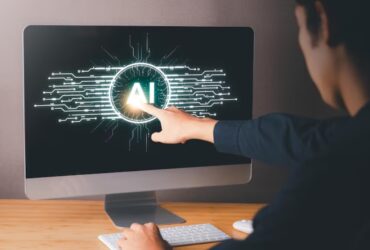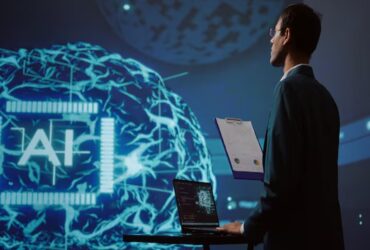Artificial intelligence is making a significant impact in education today. AI-powered technology is getting better and changing the way students learn. Many students today enjoy personalized learning due to AI influences. They access smart tutoring platforms and access learning resources more broadly.
AI makes education more predictable and allows administrators to automate tasks. Users must be aware of data breaches and security concerns. These are issues that must be addressed to keep the systems safe.
Personalizing AI in education
AI is allowing educational institutions to provide personalized learning. This is a trend that is gaining pace quickly towards the future. Schools today gather data in large volumes into their databases. They analyze it to get insights into the learning patterns of individual students.
Sometimes your Apple keyboard may stop working due to technical issues. Apple keyboard not working may stress you but there are solutions. If you land into trouble and wonder ‘’why my MacBook keyboard is not working,’’ first check the software. If the Apple keyboard doesn’t work after this, restart the gadget. Simple DIY tricks can solve your MacBook keyboard not working problem. Try the simple DIY steps first because contacting customer care or running to a repair center is not the best idea when you can do so much by yourself.
AI data also helps educators view patterns of individual student performance. These patterns are useful for creating personalized learning resources. If some information looks tough for some students, AI adjusts it automatically. The system may provide extra information and resources for the learner.
It may offer new topics that will help slow learners catch up quickly. For instance, AI-based tutors get insights about student performance. They create a learning pace that will fit each learner. This trend will be the norm in the future.
Wider education accessibility
Education is more accessible to students from all countries globally thanks to AI. Learners today connect to various educational platforms. They begin to learn from their gadgets regardless of their location. Moreover, learners with disabilities have an advantage with AI.
They access various resources that empower them to learn. These learners today use apps like text-to-speech or gesture and speech recognition. Many of them use screen readers which make the learning experience better. Some of the tools help translate the language.
This helps non-native learners learn the language better. The future of AI in education looks brighter with these technologies. The level of innovation is higher today. Access to education is becoming extended each day that passes. Students who could not access education in the past can do so today easily.
Intelligent tutoring systems
Intelligent tutoring systems are gaining popularity in the education sector. They are useful for providing feedback to learners in real-time. The ITS is powered by advanced AI features. They are available 24/7 ready to provide educational support to learners globally. Some of the systems focus on specific topics while others deal with broader courses.
A system like Carnegie Learning provides math tutoring. Aleks provides tutoring on multiple subjects like business, science, and math. Cognitive Tutor focuses on science principles only. These systems can explain a complex topic in easy language.
Automating administration tasks
AI in education does not benefit students and educators only. Administrators also benefit immensely from this technology. It was tough dealing with administrative tasks in the past. AI has made everything easier today through automation. This process eliminates manual processes that used to be tedious.
Teachers automate things like exam grading, lesson schedules, and assignments. This provides greater speed in handling issues. The systems provide higher information accuracy across all schools. The system administration tasks will likely be fully automated.
Predicting patterns
Pattern prediction is becoming an important action in education systems. Administrators need to know the likely number of applicants to be received in the next season. Teachers want to know how students will likely perform in upcoming papers. Schools seek to know what courses are trending.
They need to know which subjects will attract more attention from employers. This is where predictive analysis comes in. It is an AI-powered system that uses data to forecast the future. This trend will become the center of focus in the future.
AI in education and its implications
Artificial intelligence and the future of teaching and learning look brighter. However, several things could hinder this success. The main hindrances are as follows.
- Data privacy. Data privacy and security tops this list. AI in education does not work without big data. This information comes from multiple sources. Schools might break data protection laws unknowingly.
- AI algorithm biases. Institutions may suffer from algorithm biases as AI learns from different systems. Some data may lack accuracy or credibility. AI may not gather enough data to provide credible analysis.
- Lack of technical knowledge. Many students and educators lack the knowledge to use AI. These are issues that schools must address.
Conclusion
AI is driving the education sector in the right direction. Its future is brighter as innovations happen globally. Education will be delivered through smart systems in the future. There will be more personalized and assistive learning. These experiences will make learning enjoyable. AI is making education available in every country globally. Different systems allow automation in administration and teaching departments.












































Leave a Reply